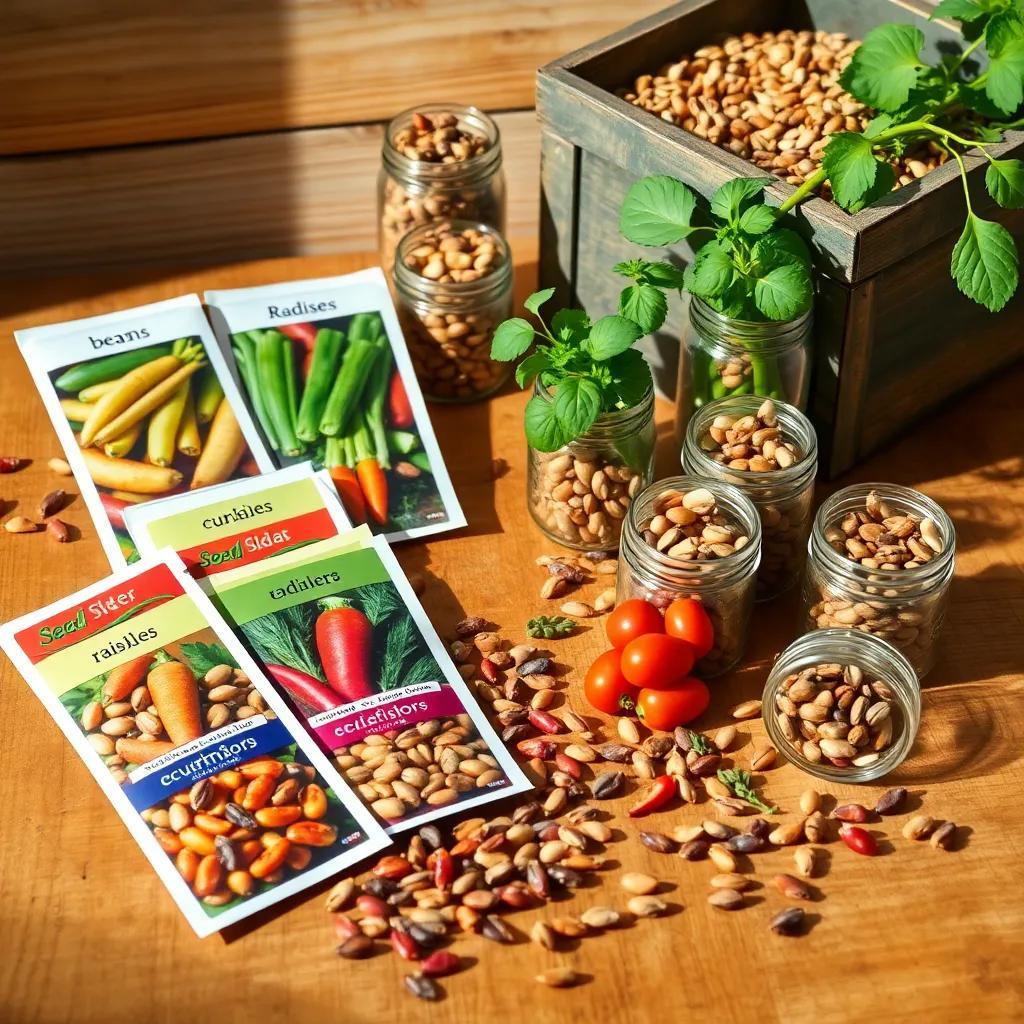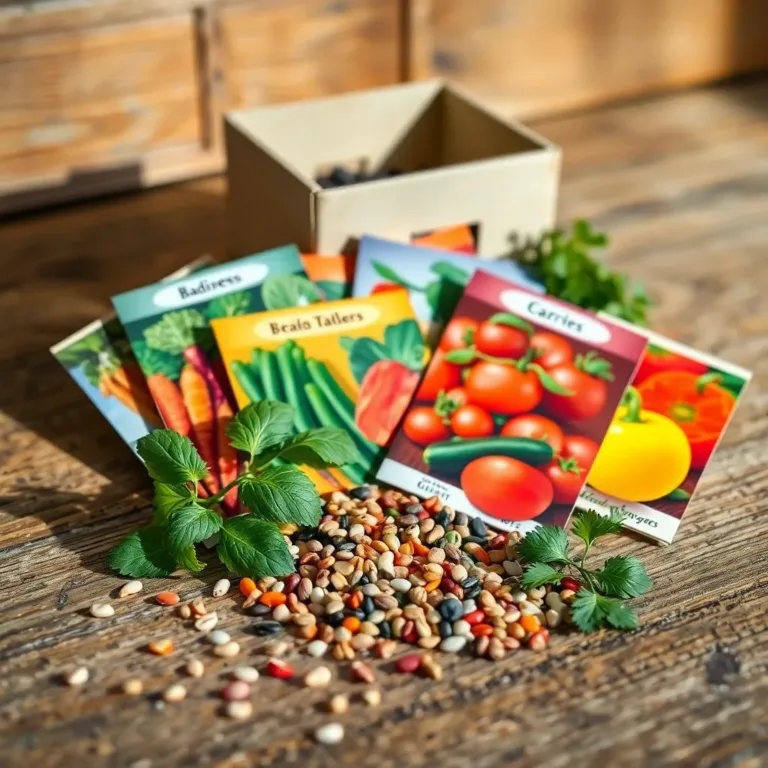Are you ready to grow your gardening knowledge? Seeds are like tiny treasures waiting to sprout into beautiful plants, but did you know they have a shelf life? Let’s explore how to keep them fresh and viable for your next gardening adventure! Ready, set, plant! 🌱
Factors Influencing Seed Longevity
Have you ever wondered why some seeds last longer than others? It’s a bit like trying to guess the best snacks for a movie night. Some just keep getting better, while others lose their zing! When it comes to seed longevity, there are several key factors that determine how long seeds can stay viable, or in other words, ready to sprout into beautiful plants.
- Seed Type: Just like a cat and dog have different lifespans, seeds from different plants also vary in how long they last. Some seeds, like those from annual plants, usually have a shorter lifespan. Others, especially from perennials, can remain viable much longer. It’s like comparing a quick snack to a hearty meal!
- Genetic Factors: The genetic makeup of seeds can also greatly influence their durability. Some plant varieties are naturals at producing seeds that last forever, while others need a little extra care. This is why choosing seeds from reliable sources can be like picking the right ingredients for your favorite dish!
- Environmental Conditions: When it comes to storage, the environment matters too! Seeds love cool, dry, and dark spaces. High temperatures and humidity can quickly ruin a seed’s chances. So, treat your seeds like you would a delicate dessert – keep them safe!
- Moisture Levels: Moisture is the biggest enemy of seed viability. Seeds need to be properly dried before storage. Think of it like letting cookies cool before putting them away. If they’re put away too warm, they might get soggy!
- Pests and Diseases: Lastly, watch out for those pesky invaders! Seed-borne pests and diseases can wreak havoc on your seed collection. So, check your seeds and make sure they’re in tip-top shape before storing them away!
Understanding these factors can help you make smarter choices for your garden. After all, who wouldn’t want to make the most out of those little packets of life?
Seeds with Extended Shelf Life
Some seeds are like the superheroes of the garden world – they have a long shelf life and are ready to take on the challenges of time! If you’re trying to plan your garden, it’s good to know which seeds last the longest. Here are some seeds that you can count on to stick around for a while:
- Beans: These little powerhouses can stay viable for up to five years! That’s right, with proper storage, kidney beans and black beans can be your trusty sidekicks for many seasons.
- Carrots: Who knew carrot seeds could hang in there for about three years? These seeds are perfect for gardeners who love to enjoy fresh, crunchy carrots year after year!
- Radishes: If you’re looking for quick results, radish seeds can last up to three years, making them a speedy choice for your garden. Perfect for those of us who can’t wait for homegrown veggies!
- Cucumbers: Cucumber seeds can stick around for more than five years! While their germination might drop as time goes on, they’re still a reliable option when stored correctly.
- Tomatoes: Tomato seeds are a fan favorite, lasting between three to five years. Just remember, some varieties have a shorter life, so keep an eye on which ones you have!
- Peppers: From sweet to spicy, pepper seeds can last three to five years in the right conditions. They’re great for adding a kick, no matter how long they’ve been stored!
By knowing which seeds can last longer, you can make more informed decisions about your gardening adventures. With the right care and attention, you can enjoy fresh produce for years to come! Happy planting! 🌱

Effective Seed Storage Practices
Storing seeds properly is like giving them a cozy blanket! It keeps them safe and sound for when you need to plant them. Here are some effective practices to help you store your seeds and keep them viable for as long as possible:
- Keep Seeds Dry: Moisture is a seed’s worst enemy! Before packing them away, make sure they are thoroughly dried. You can air-dry seeds in a well-ventilated area. If they feel even slightly damp, wait a bit longer. Just like you wouldn’t store a wet sponge, don’t store wet seeds either!
- Use Airtight Containers: Want to keep your seeds fresh? Use airtight containers! Whether it’s glass jars, resealable plastic bags, or specialized seed storage containers, these will protect your seeds from moisture and pests. Just make sure to squeeze as much air out as possible before sealing them up tight!
- Choose a Cool and Dark Spot: Seeds thrive in cool, dark places. A temperature of around 40-50°F (4-10°C) is usually best. Avoid storing seeds in warm areas, like near heaters or in direct sunlight. Think of it as putting them in a comfy, shaded corner of your home!
- Label Everything: Nothing’s worse than forgetting what type of seeds you’ve got! Use waterproof labels to mark the container or packet with the seed type and the date. This way, you’ll always know what seeds you have and how old they are!
By following these simple practices, you can keep your seeds safe and ready for planting! Who knew seed storage could be so easy? I can’t wait to see what you grow!
Tips for Extending Seed Viability
Want to make your seeds last longer? Here are some handy tips that can help extend the viability of your seed stash, ensuring you’re ready to plant when the time comes!
- Harvest Seeds at the Right Time: Timing is everything! Make sure your seeds are fully mature and dry before collecting them. Seeds harvested too early tend to lose their viability, just like ripe fruit tastes better than unripe!
- Store Seeds in Small Batches: Instead of putting all your eggs in one basket (or all seeds in one jar!), store your seeds in smaller portions. This way, if one batch goes bad, you’ll still have backup seeds to fall back on. Plus, it makes organization a breeze!
- Rotate Your Seed Collection: Think of your seeds like a pantry! Use your oldest seeds first to get the best results. Newer seeds can be saved for later. This helps keep your collection fresh, kind of like rotating your stock of snacks!
- Limit Handling: Try not to handle your seeds too much. Excessive touching can introduce moisture and damage them. Use clean, dry tools when you need to handle them, and treat them with care!
- Conduct Germination Tests: Every once in a while, test the germination rates of your seeds. This way, you’ll know how viable they are. Just take a few seeds, place them on a damp paper towel, and watch to see how many sprout! It’s like a mini science experiment!
With these tips, you’ll not only extend the life of your seeds, but you’ll also ensure a bountiful garden season ahead. Happy planting!
Methods for Testing Seed Viability
Wondering if your seeds are still good to go? Testing seed viability is a fun and easy way to check! Here’s a simple step-by-step guide that I follow to make sure my seeds are still sprouting champions:
- Gather Your Materials: You’ll need a handful of seeds to test, some moist paper towels or coffee filters, a plastic bag, and a warm spot for germination. That’s it! Easy peasy!
- Prepare the Seeds: Start by counting out about 10 to 20 seeds. If you have lots of seeds, go for a larger sample! Remove any broken or debris-filled seeds. We want the best of the best!
- Create Your Moisture Chamber: Moisten the paper towel or coffee filter without soaking it. Then, lay the seeds on one half, giving them some space to breathe. Fold it over to cover the seeds completely!
- Seal and Label: Place the folded towel into a bag, seal it, and label it with the type of seeds and the date. This way, you won’t forget what’s what!
- Provide Warmth: Find a warm spot, like on top of the fridge or near a sunny window. The ideal temperature is around 70-75°F (21-24°C) for most seeds.
- Monitor Growth: Check on your seeds every few days! Depending on the type, they may take a few days to a couple of weeks to germinate. Keep track of how many sprout, and calculate the germination rate!
- Determine Viability: If over 70% of your seeds sprout, they’re looking good! If not, it might be time to refresh your collection.
By regularly testing your seeds, you can feel confident in your gardening choices. Now go ahead, give it a try, and watch your green friends come to life! 🌱

